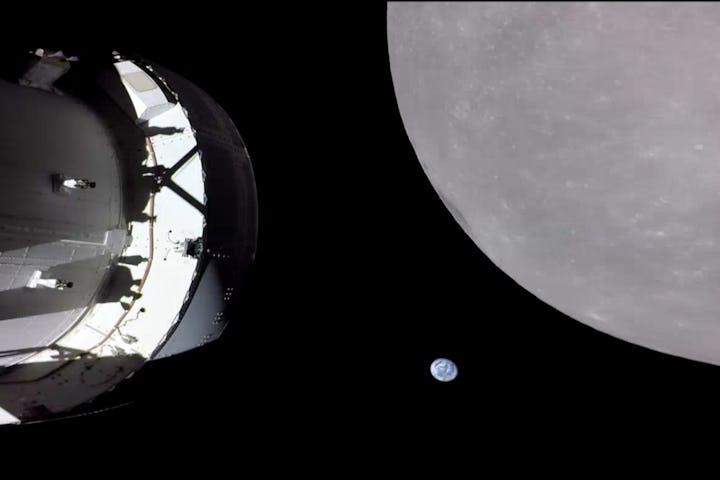NASA's Orion Gives Us A Rare Glimpse At The Far Side Of The Moon
Orion has been up in space for one week, and it’s already giving astronomers a lot to get excited about, including a rare glimpse at the Moon's far side.

Last week, NASA successfully launched its Artemis 1 project, the first part of a multi-step mission to learn more about the Moon. This first step was essential, and following several blips that had the Orion spacecraft launch date pushed back, it successfully exited the Earth’s atmosphere and is on course to the Moon. Orion has been up in space for one week, and it’s already giving astronomers a lot to get excited about, including a rare glimpse at the Moon’s far side.
According to The New York Times, NASA’s Orion spacecraft reached the far side of the Moon on November 20th, following a six-day journey to get there.
“A few minutes before Orion’s closest pass with the moon on Monday, the capsule fired its engine for 2.5 minutes,” the publication explains. Firing up its engines allowed the spacecraft enough momentum to swing to the far side of the Moon, traveling around in the opposite direction from which the Moon travels around Earth.
Nov. 21, 2022 -- On flight day six of the Artemis I mission, Orion used its optical navigation camera to snap this black-and-white photo of the Moon. Orion uses the optical navigation camera to capture imagery of the Earth and the Moon at different phases and distances, providing an enhanced body of data to certify its effectiveness under different lighting conditions as a way to help orient the spacecraft on future missions with crew.
As the spacecraft did its flyby, a camera on Orion snapped a clear photo of the Moon getting more prominent as the spacecraft approached. NASA released the footage on YouTube, and you can also see Earth, which looks like a small marble getting smaller as the Moon gets larger.
Orion and Earth. This first high-resolution image, taken on the first day of the Artemis I mission, was captured by a camera on the tip of one of Orion’s solar arrays. The spacecraft was 57,000 miles from Earth when the image was captured, and continues to distance itself from planet Earth as it approaches the Moon and distant retrograde orbit.
“With Orion behind the Moon, NASA’s mission controllers lost contact with the spacecraft, as planned,” The New York Times explains. “Thus, they did not know that the engine firing had succeeded until Orion emerged again 34 minutes later.”
After going around the Moon, the Orion is expected to return to Earth on December 11th, landing in the Pacific Ocean, where NASA teams will be waiting. During its travels, the Orion will be collecting data to help NASA understand how future flights might affect humans on board. Those scientific instruments will be collected when the spaceship returns to Earth.
The spacecraft has no humans on board since this mission is to confirm that the design of the spacecraft works. This will allow NASA to modify and make fixes before human astronauts board for the second half of the mission, Artemis II, scheduled for 2024.